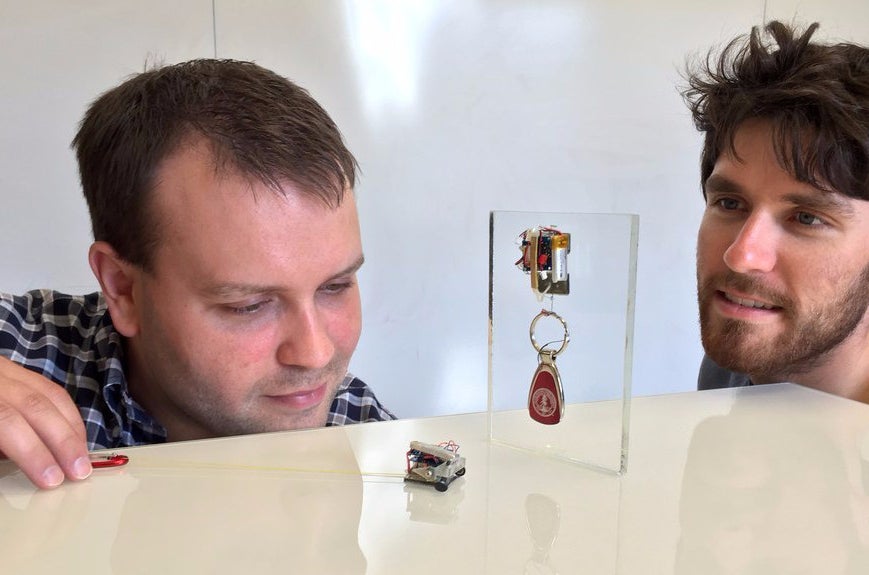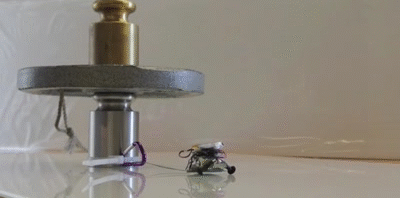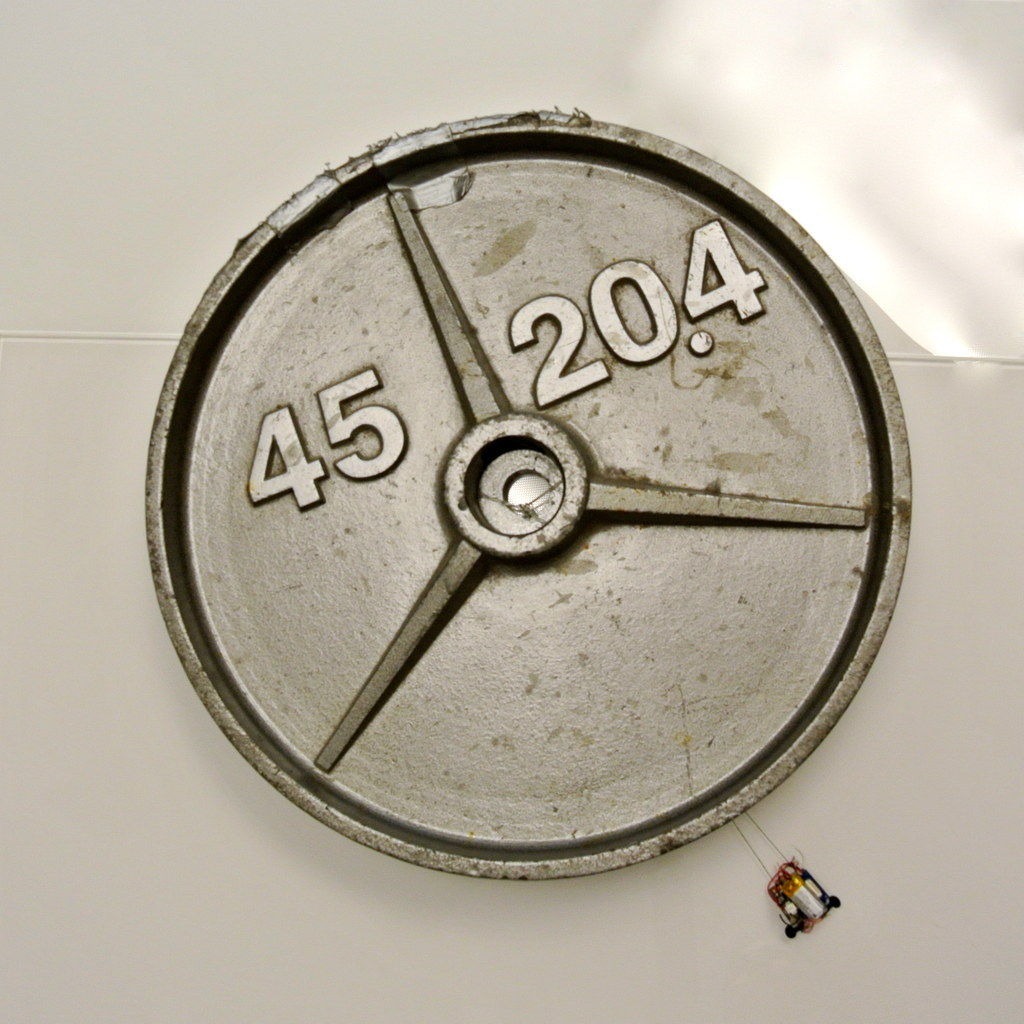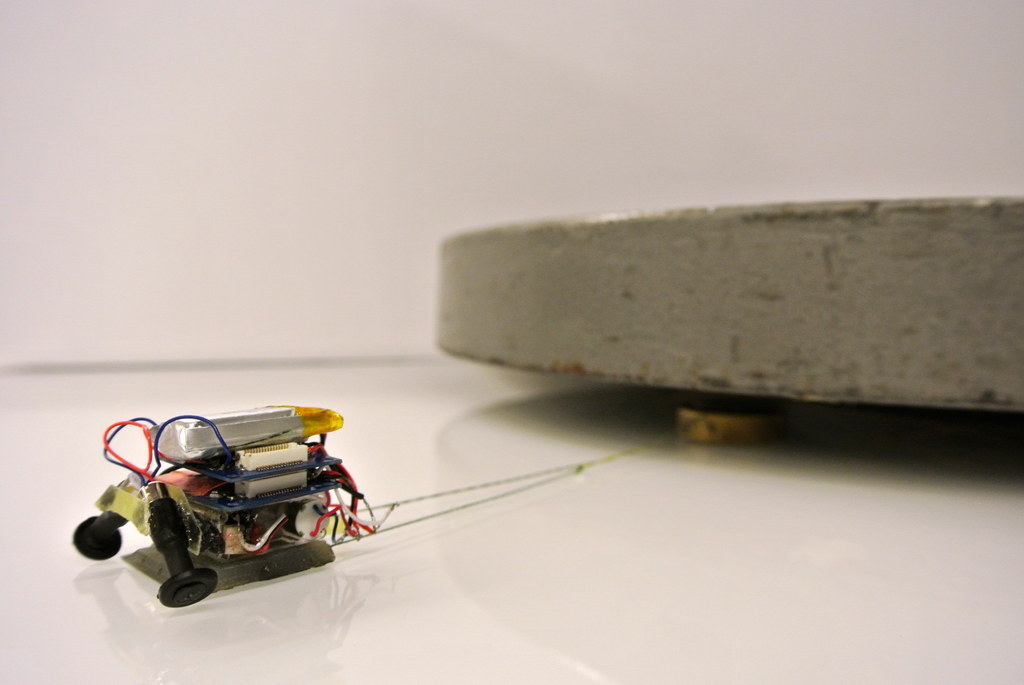Scientists at Stanford University have built miniature robots that mimic the nimble techniques of geckos and inchworms, allowing them to heave incredible heft.


Lizard-influenced technology made headlines last year when Elliot Hawkes (right), part of the university's Biomimetics and Dexterous Manipulation Lab, scaled a wall using gecko-inspired adhesives.
"That was the initial spark," researcher David Christensen (left) told BuzzFeed. While microrobots tend to not really be capable of human-scale feats, he said, the team borrowed some elements from that project and shrank them to make a “surprisingly capable little guy."
This microtug bot can lift more than 100 times its weight.
Then there's the µTug bot, which can drag a mug of coffee — and up to 2,000 times its weight.


The secret: Tiny rubber hairs on the robot's belly (right) form a gecko adhesive. Gecko toe pads have microscopic hairs called setae, which then split into millions of smaller hairs and — with the help of an attractive force — help it adhere to a surface.
Similar to an inchworm, the bot alternates between lifting part of its body to accelerate forward...

...and plopping it back down on the ground to grip and pull.
Research groups are keen on tapping into skills found in nature.

Small robots like these could be immensely handy if employed in emergency situations.

These little guys will be presented next month at the International Conference on Robotics and Automation in Seattle.
